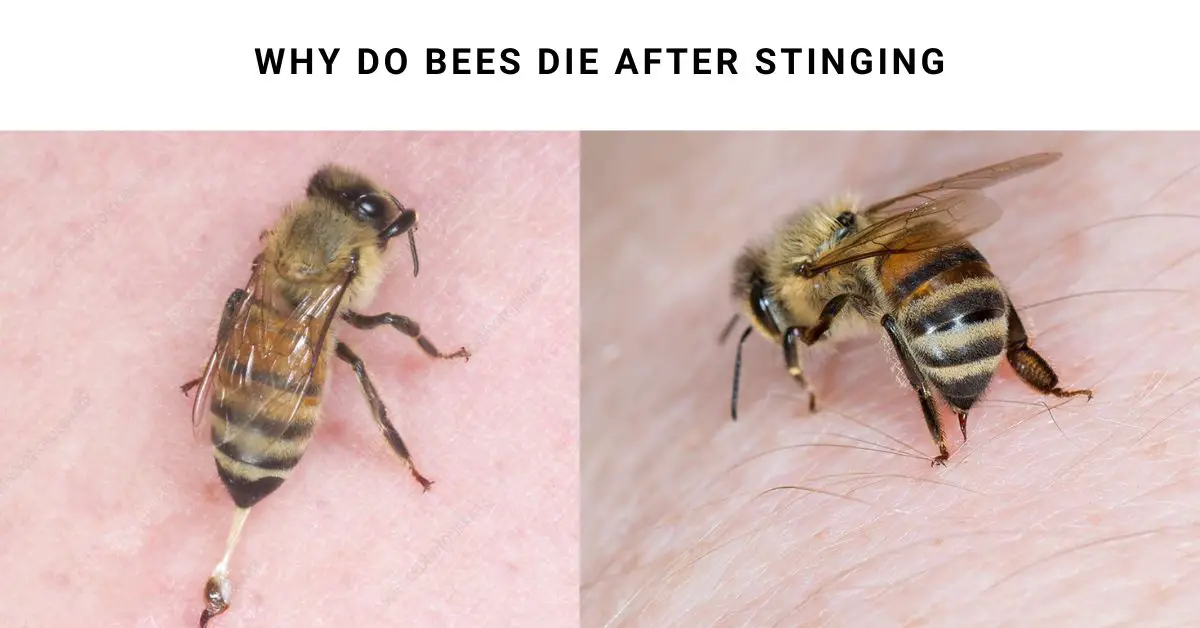In this comprehensive guide, we delve into the fascinating phenomenon of why bees die after stinging. We will also explore whether queen bees, wasps, hornets, bumble bees, and honey bees experience a similar fate after using their stingers. Understanding the reasons behind this behavior sheds light on the complex biology of these remarkable insects and provides valuable insights into their survival strategies.
Bees and Their Stingers
When a bee stings, it is not just delivering pain to its victim, but also sealing its own fate. Unlike other stinging insects like wasps and hornets, bees possess barbed stingers. When a bee stings, the barbs become embedded in the target’s skin, and upon attempting to withdraw, the stinger and attached venom sac are torn from the bee’s body. This results in significant damage to the bee’s abdomen, leading to its eventual death.
Queen Bees Do They Die After Stinging?
Queen bees, unlike worker bees, have smooth stingers that can be withdrawn without causing damage to their bodies. This adaptation allows queen bees to sting multiple times without losing their lives. However, it is essential to note that queen bees rarely engage in stinging like their worker counterparts. Their primary role is reproduction and leading the colony.
List of Bees which are die after sting:
| Bee Species | Behavior |
| Apis mellifera (Honey Bee) | The honey bee’s stinger is barbed, meaning it gets stuck in the skin upon stinging. When it tries to fly away after stinging, the stinger is pulled out, along with the bee’s abdomen, causing its death. |
| Bombus spp. (Bumble Bee) | Bumble bees have a similar stinger mechanism as honey bees. When a bumble bee stings, its stinger remains lodged in the skin, leading to its death. |
| Apis cerana (Asian Honey Bee) | The Asian honey bee’s stinging behavior is similar to Apis mellifera. It dies after stinging due to the barbed stinger getting stuck in the target. |
| Melipona spp. (Stingless Bees) | Stingless bees have a less pronounced stinger, but it can still cause them harm when they sting. While their stinger doesn’t usually get stuck, repeated stinging can be fatal to the bee. |
List of Bees which are not die after sting:
| Bee Species | Behavior |
| Megachile spp. (Leafcutter Bees) | Leafcutter bees have smooth stingers that do not get stuck in the skin upon stinging. This allows them to sting multiple times without dying. |
| Osmia spp. (Mason Bees) | Mason bees, like leafcutter bees, have smooth stingers and can sting repeatedly without losing their lives. |
| Xylocopa spp. (Carpenter Bees) | Carpenter bees possess a smooth stinger, enabling them to sting multiple times without facing mortality. |
| Andrena spp. (Mining Bees) | Mining bees have smooth stingers and, similar to other non-barbed species, can sting without sacrificing their lives. |
| Halictidae spp. (Sweat Bees) | Sweat bees belong to the Halictidae family and possess smooth stingers, allowing them to survive after stinging. |
Related Posts:
- Types of Beehives: How to Choose the Perfect hive for Your Bees.
- Types of Bee Nests: The Surprising Diversity of Honey Bee Hives
- Beekeeping Books For Beginners.How to Start Beekeeping.
The Fate of Wasps and Hornets After Stinging
Unlike bees, wasps and hornets have straight, unbarbed stingers. This unique feature enables them to sting multiple times without facing the same lethal consequence as bees. As a result, wasps and hornets can be more aggressive in their defensive tactics and are less inclined to avoid stinging when threatened.
Bumble Bees Sting
Similar to honey bees, bumble bees also possess barbed stingers. When a bumble bee stings, it experiences the same fate as honey bees. However, bumble bees exhibit a higher tolerance for cold weather, making them more active in cooler climates.
Do Honey Bees Die After Stinging?
Honey bees, often regarded as one of nature’s most vital pollinators, face the grim reality of dying after they sting. As social insects living in colonies, honey bees prioritize the protection of their hive and will not hesitate to use their stingers when they perceive a threat. This act of self-sacrifice serves as a warning to potential predators, demonstrating the unity and strength of the bee colony.
Why Do Worker Bees Die After Stinging?
Worker bees, the female bees responsible for foraging and protecting the hive, are the ones most likely to sting. Their selfless dedication to the colony drives them to defend it at all costs. When a worker bee stings an intruder or perceived threat, it leaves behind not only its stinger but also a pheromone that signals danger to other bees. This scent attracts more bees to defend the hive, ensuring its safety, even if it means losing their lives in the process.
How Fast Does a Bee Die After Stinging You?
The time it takes for a bee to die after stinging varies depending on various factors, such as the bee’s species, age, and overall health. In general, a bee may survive for a few minutes to an hour after delivering its sting. However, once the stinger is detached, the bee’s fate is inevitable.
Conclusion
In conclusion, the phenomenon of bees dying after stinging is a result of their unique anatomy and behavior. Unlike other stinging insects, the barbed stinger of bees causes them to sacrifice their lives in defense of their colony. Queen bees and some solitary bees possess stingers that allow for multiple stings without facing the same fate. Understanding these intricate details not only enriches our knowledge of these incredible insects but also fosters greater appreciation for their vital role in the natural world.




